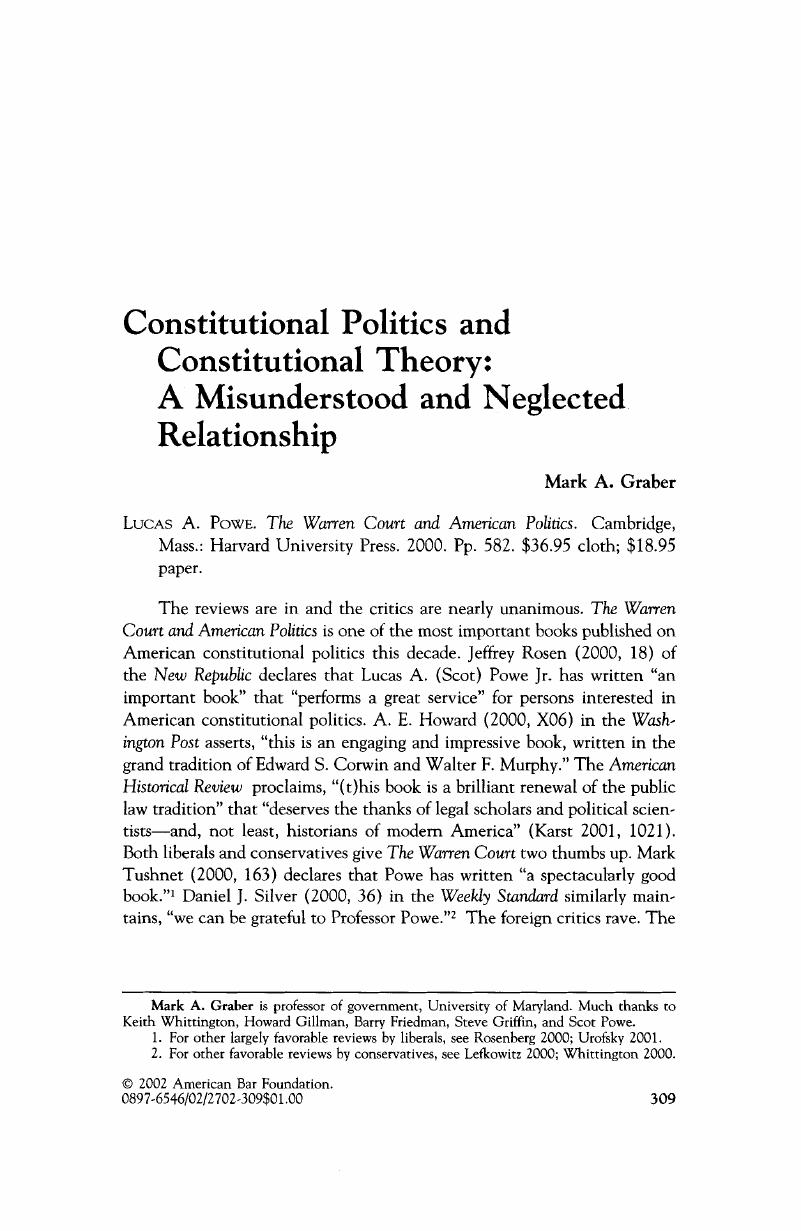Crossref Citations
This article has been cited by the following publications. This list is generated based on data provided by Crossref.
Feldman, Stephen M.
2005.
The Rule of Law or the Rule of Politics? Harmonizing the Internal and External Views of Supreme Court Decision Making.
Law <html_ent glyph="@amp;" ascii="&"/> Social Inquiry,
Vol. 30,
Issue. 1,
p.
89.
Graber, Mark A.
2005.
Constitutionalism and Political Science: Imaginative Scholarship, Unimaginative Teaching.
Perspectives on Politics,
Vol. 3,
Issue. 01,
Shane, Peter M.
2006.
Analyzing Constitutions.
SSRN Electronic Journal,
Keck, Thomas M.
2007.
Party Politics or Judicial Independence? The Regime Politics Literature Hits the Law Schools.
Law & Social Inquiry,
Vol. 32,
Issue. 2,
p.
511.
Martens, Allison M.
2007.
Reconsidering Judicial Supremacy: From the Counter-Majoritarian Difficulty to Constitutional Transformations.
Perspectives on Politics,
Vol. 5,
Issue. 03,
p.
447.
Lemieux, Scott E.
and
Watkins, David J.
2009.
Beyond the “Countermajoritarian Difficulty”: Lessons From Contemporary Democratic Theory.
Polity,
Vol. 41,
Issue. 1,
p.
30.
Peretti, Terri
2010.
The Political Construction of Human Rights in the United States.
SSRN Electronic Journal,
Bedi, Sonu
2012.
Special Issue: The Discourse of Judging.
p.
1.



